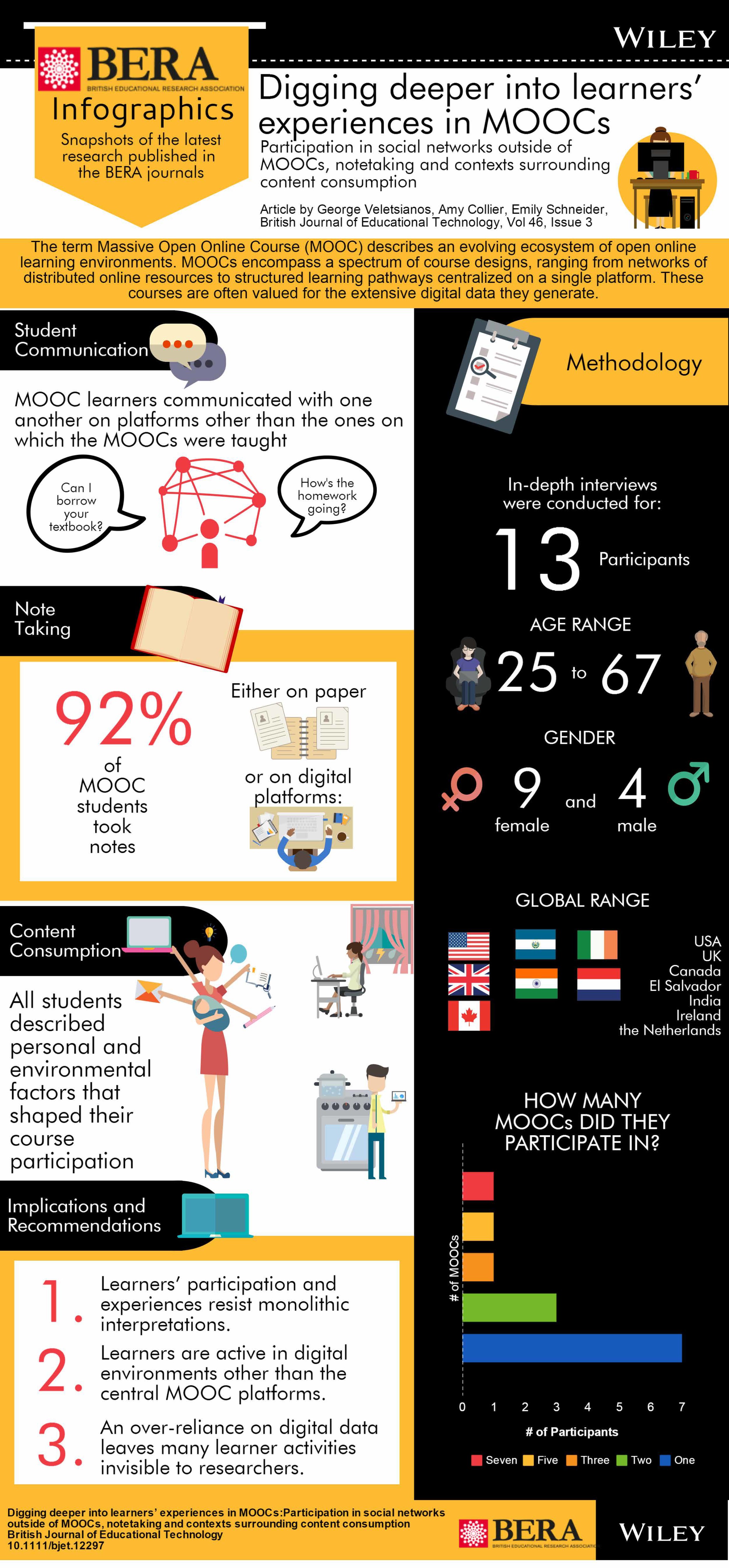Over the last year or so, we’ve interviewed more than 200 individuals who have participated in a number of open courses. We are working on a project in which we are using learner narratives and vignettes from these interviews to help administrators, faculty, researchers, and learning designers understand learners and improve their learning experience. Though there are many ways that are used to understand learners (e.g., dashboards) we believe that in-depth vignettes of typical experiences may allow for greater sensitivity of the learners’ lifeworld and realities. We will be using these stories to problematize various aspects of digital learning. Each story will be followed by a longer analysis of the issues raised in the story. For now, below is one such (DRAFT!) story. What do you think? Is there anything else that you’d like to see in this narrative? Is it interesting? If you are an administrator, faculty, researcher, or learning designer, does this story add anything valuable?
Title: Why not?
Theme: Open learning opportunities are oftentimes costless and relatively risk-free.
Mary and her demanding Pomeranian, Kylie, live deep in the heart of Texas. “I have a passion for the law!” the thirty-year-old exclaimed when we called her on her landline. She had seriously considered going to law school and had even passed her LSATS, the law school entrance exams used for US Universities. But having just finished four intense years of a bachelor’s degree, she decided to wait a bit. “Law school just didn’t seem like a good choice at the time,” she reflected. Five years later, Mary has settled into her work as a business consultant. Her interest in the law is still keen, and she’s never completely given up the dream of law school, but it’s been tempered with a bit of realism. “I don’t know if I can afford to spend another three years in the classroom,” she confided to us, “I don’t know if I still have the same passion for the legal industry as I did five years ago.”
During an afternoon enjoying frozen mango margaritas with a friend, trying to cope with the scorching sun, Mary learned about MOOCs. Shortly thereafter, she signed up for a number of courses, dabbling in some and promptly forgetting about others. One day, ContractsX, a course on contract law taught by a Harvard professor, popped up on her screen and she decided to “give it a shot”. What had she got to lose? “It’s a free class, taught at one of the more well-respected institutions. Why not?!” she laughed.
The course was flexible and fit into her busy life. On Saturday mornings she would sit in her office, with Kylie by her side and a warm cup of dark roast coffee in her hand, and use her trusted iPad to watch Harvard Law lectures. These weren’t just any lectures. Professor Fried was a masterful storyteller, a king of his trade. It was through these short, interesting, and memorable stories that Professor Fried taught concepts relating to contract law. “I can’t believe that I’m sitting here, I’m learning this material from Harvard law!” The fast pace and cramped content made the course challenging, Mary acknowledged, and she didn’t always do as well as she would have liked on the course tests. But, as she was able to go back to review the answers and re-watch the videos, this didn’t stress her too much, and she ended up passing the course with flying colours. Proud of her certificate of accomplishment, Mary enthused, “It makes me want to keep coming back for more!”
Even though it was a personal interest in the law that led her to sign up for this course, Mary has found what she learned in ContractsX helpful when she has to deal with contracts in her own job. She has enthusiastically recommended the course to co-workers and friends. She’s currently taking a number of other open courses and is anxiously awaiting the second version of the Contracts course. While Mary’s dream of attending law school, may not have changed, her confidence in herself has: “I never thought of applying to Harvard. There was no way I would be getting in. But then, five years later, I’m taking a course from Harvard. I wouldn’t say that I’m a Harvard law student, but at least now I could sit across from a Harvard law student and have a clear conversation with them. It’s very rewarding to know that.”


